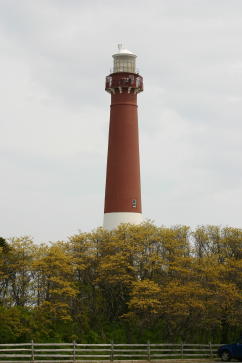 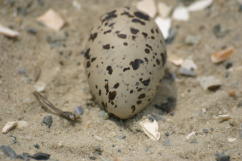 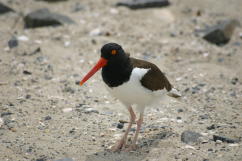 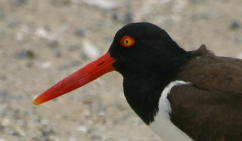
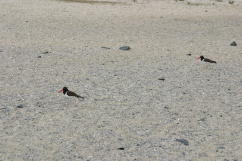 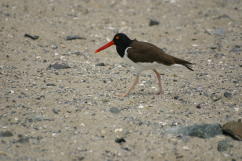 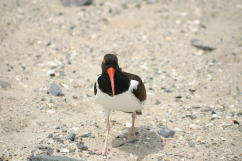 |
|
At Little Egg Harbor, we
got to appreciate the grace of the common Herring and Laughing
Gulls, as well as Barn Swallows and Common Terns.
Leaming's Run Garden
provided a photo opportunity for American Robins in beautiful
surroundings.
We heard many other species such as Ovenbirds and Wood
Thrushes but had trouble finding them.
|
|
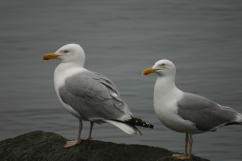 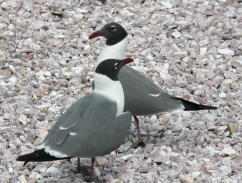 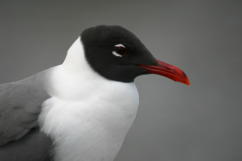 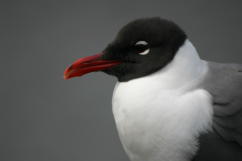 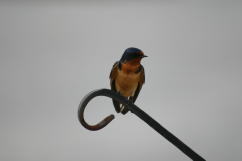 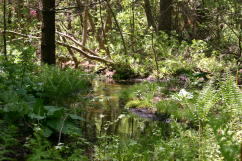 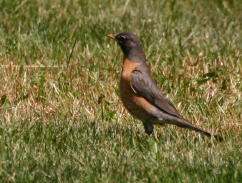 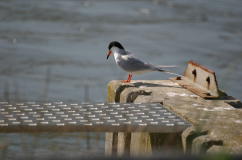 |
|
The Forsythe National Wildlife Refuge was loaded with
shorebirds, giving us a chance to sharpen our identification skills.
Flocks of Short-billed Dowitchers rapidly probed the muddy bottom
"sewing machine style," while Dunlins in their colorful spring plumage
probed more erratically.
They were joined by Glossy Ibis, Ruddy
Turnstones, and the Killdeer-like little Semipalmated Plover (which
shows only one chest ring as opposed to the two of its larger cousin).
Snowy Egrets, Brant, Eastern Bluebirds-- and poison Ivy-- were
plentiful.
|
|
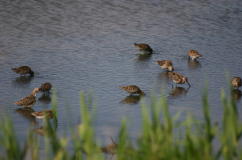 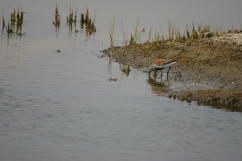 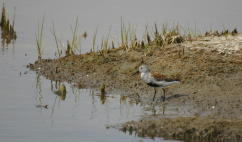
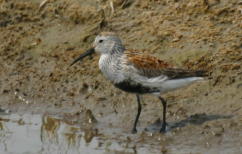 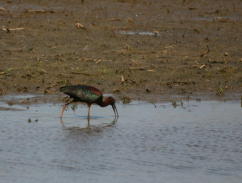 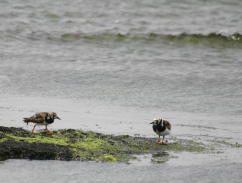 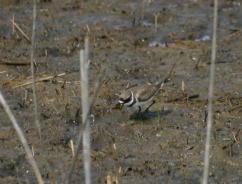 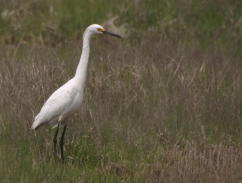 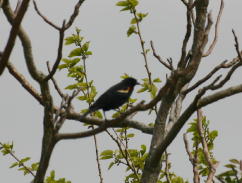 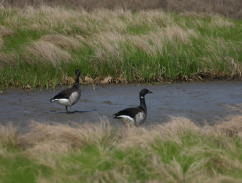 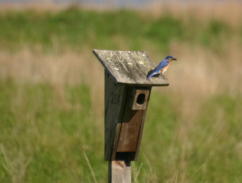  |
|
We had the opportunity to closely observe one of the three
"peeps" (the Semipalmated, Western and Least Sandpipers), small
sandpipers that are most common and easily confused. This bird teneded
to stay away from the shorline, foraging in the mud and grass. Its back
was warm brown and its legs were yellowish, all indicators that it was
a Least Sandpiper.
In the event that there was any doubt about its leg color, the
bird did an imitation of the Ziegfeld Follies, thrusting its leg out
for all to see!
|
|
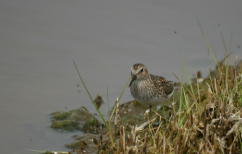 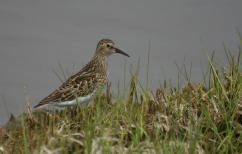 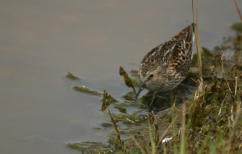 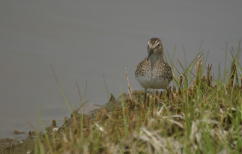 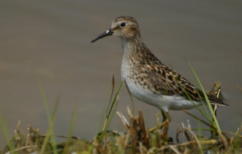 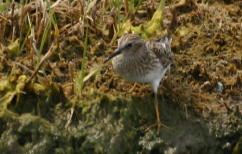 |
|
From Mary and Dan's back porch, we watched fighter pilots buzzing overhead. An ominous portent
of the wildfires that were to occur two days later, this photo
shows an (apparent) flare descending over the Pine Barrens.
The fire was
alleged to have been caused by the release of a flare by National Guard
fighter pilots making training bombing runs, several miles to the north
of this location.
|
|
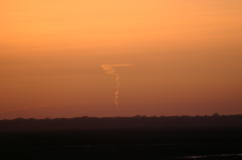 |
|

































